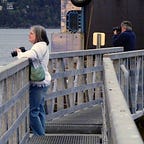What I look for in RV Park Reviews
Details, Sites, what a newbie needs to know….
As a newbie to the RV life, I rely heavily on reviews of RV Parks and Campgrounds, Harvest Hosts, Boondocking, etc. I use various websites, such as; Campgroundreviews.com and Campendium, Facebook groups.
When we hit the road and started to experience RV parks, I quickly realized a lot of reviews were missing vital information. With thousands of newbie RVers out there, I wondered if many of them, like me, wanted to know more? When I write a review, I try to think of what I would like to know and I make sure my photos share vital information. As I wrote more reviews, (check them out on campgroundreviews.com) my reviews started to morph adding more information.
Most reviews focus on the destination more so than the park itself, especially when it comes to photographs, which show kids playing, amenities, surrounding area, but not the actual sites or park themselves. The descriptions are usually brief, nondescript, maybe just a few plain facts.
Tips of what do do in the area while visiting are helpful, but when I am relying on reviews of the park itself, I need to know more than what to do or what amenities the park offers.
What I primarily look for in a review, especially as a newbie:
- The site size. How big are they, not necessarily exact numbers, but, how tight, are they easy to get in and out of, closeness of neighbors, is it long enough and wide enough?
2. Interior Roads. Navigating through an RV park/campground as a newbie is one of the most stressful experiences when RVing, it is right up there with backing up. How wide are the interior roads? How easy is it to navigate inside the park? Are the turns tight? The roads narrow? Are cars/trucks parked behind or in front of other RVs, blocking the path? Other obstacles? Entrance to the park, is it wide? Is it easy to locate? When it is time to leave are the interior roads built for exiting, especially larger rigs. This is really important in older parks that are usually smaller in size, or parks with a lot of long-term residents who tend to spread out more.
3. Pull-through vs backend sites. As newbies, backing up is still a steep learning curve so when researching a park — photographs and descriptions of backend sites are sometimes more helpful to newbies, than Google Earth and the park’s website. Are the interior road wide enough to maneuver as you back up? What obstacles are in the way? What is the width of the site? More often than not, I tend to look for parks with pull-throughs, not just because I like them, but because I am not always sure of the sites at the park when it comes to backing up. We have visited parks that once I saw the backend sites, I knew we could do it, but it wasn’t described well, or was it clearly visible online. We have also been to parks where we did a pull-through but the interior roads were so narrow and there were so many obstacles (mostly other car/trucks) that getting in and out of the site was challenging to say the least. Experienced RVers may already know how to do most of this, but for newbies who are still learning, if a park/campground has really tight interior roads, tight and close together sites, it is more challenging, so it is helpful to know that beforehand. Same goes with sites that are wide, easy to navigate, this also helps.
If a review tells me the spaces are tight, or the photos show the neighbors practically on top of each other, I keep looking.
What else might I look for:
- Hook-ups — especially if I am looking for full hook-up.
2. What type of site — asphalt, concrete, sand, grass, etc. If planning a visit to somewhere rainy (like Washington) I may want to avoid dirt, grass, sand, during the rainy season.
3. Staff and the importance of customer service, especially when new and rely on their help and advice.
4. Laundry room facilities. After a while on the road, well, things tend to get a little dirty, even smelly. Are they clean? Convenient to use?
5. Location — where it is located in relation to what the plans are and what is important to see.
6. Price/Rate. I know, you would think this would be priority number one and it is very important, especially when on a budget, but so is choosing a location that is easy on the stress level. Sometimes you want to Glamp. Sometimes you just need a good place to relax. Other times, you need a quick, inexpensive night while traveling.
7. Amenities.
8. Tips on to see while in the area, especially if it is not a well known fact.
9. Dog Park Area — many travel with pets.
10. Anything else an RVer may need to know.
When it comes to photographs:
1. Photograph the interior roads.
2. Photograph the entrance/office.
3. Get a close-up shot of the hook-ups.
4. A wide shot of the site, especially with the vehicles in it.
5. Amenities.
6. Favorite places you visited.
7. Dog park or other unique features, such as, gathering spots.
Reviews can be a critical part of trip planning and the more information provided about the park/campground itself, the more useful that information is to others. I, and others, appreciate those that take the time to write reviews, add details to the review, and post helpful photos.
Thank you for taking the time to post reviews.
Happy Camping!
